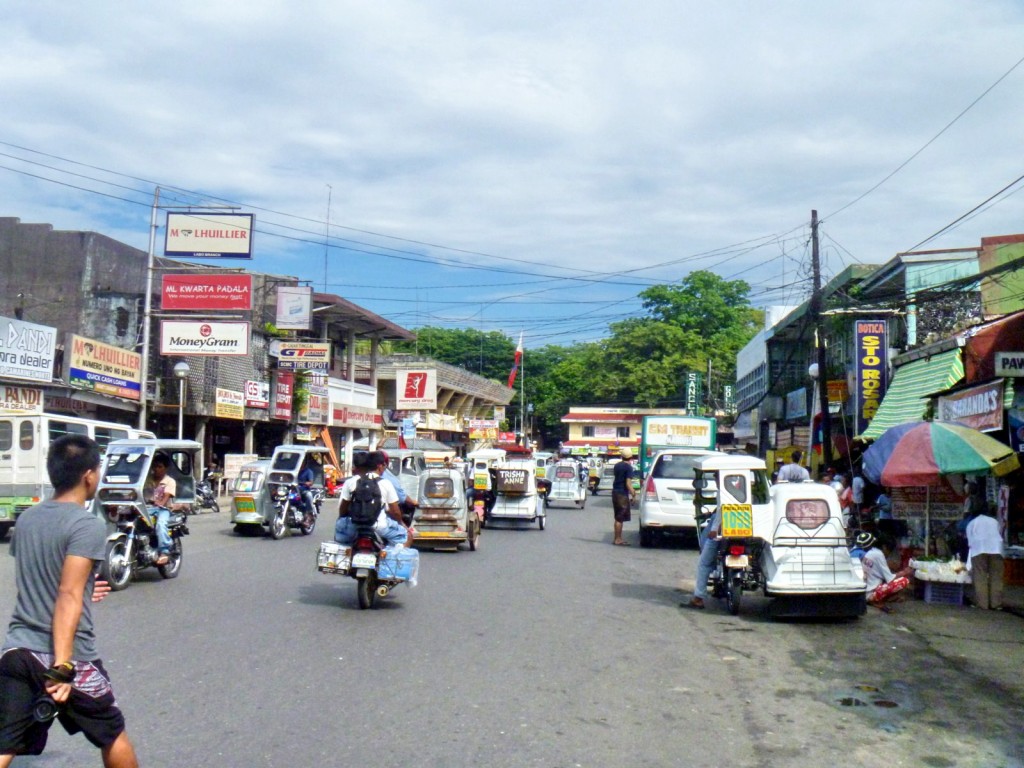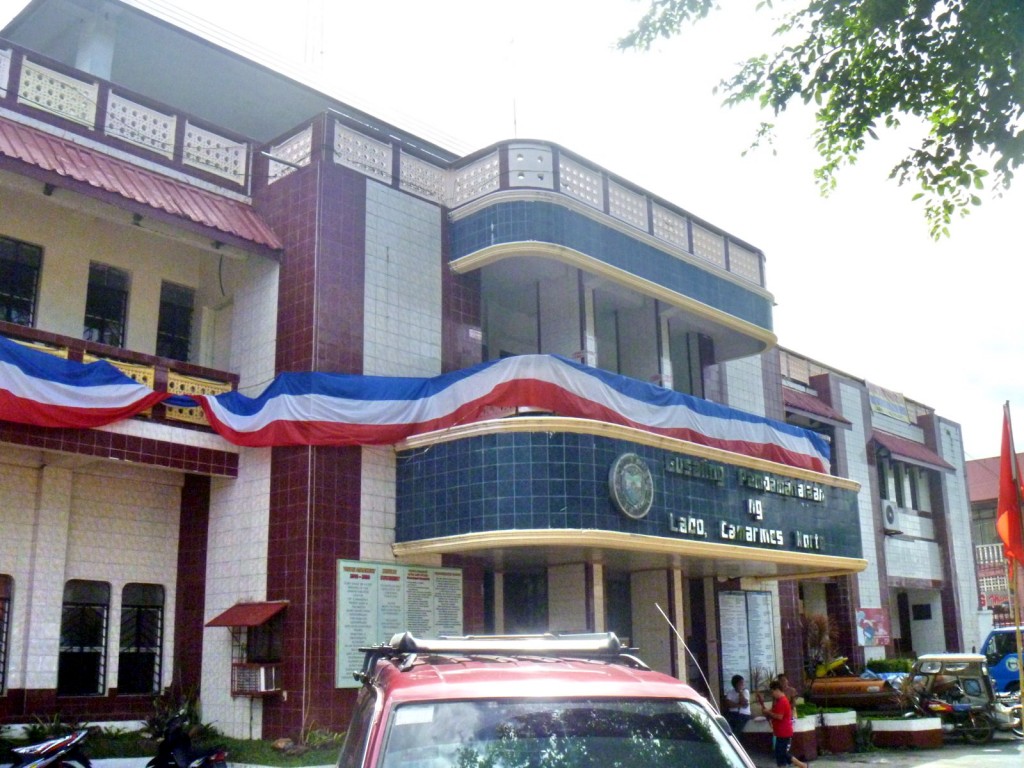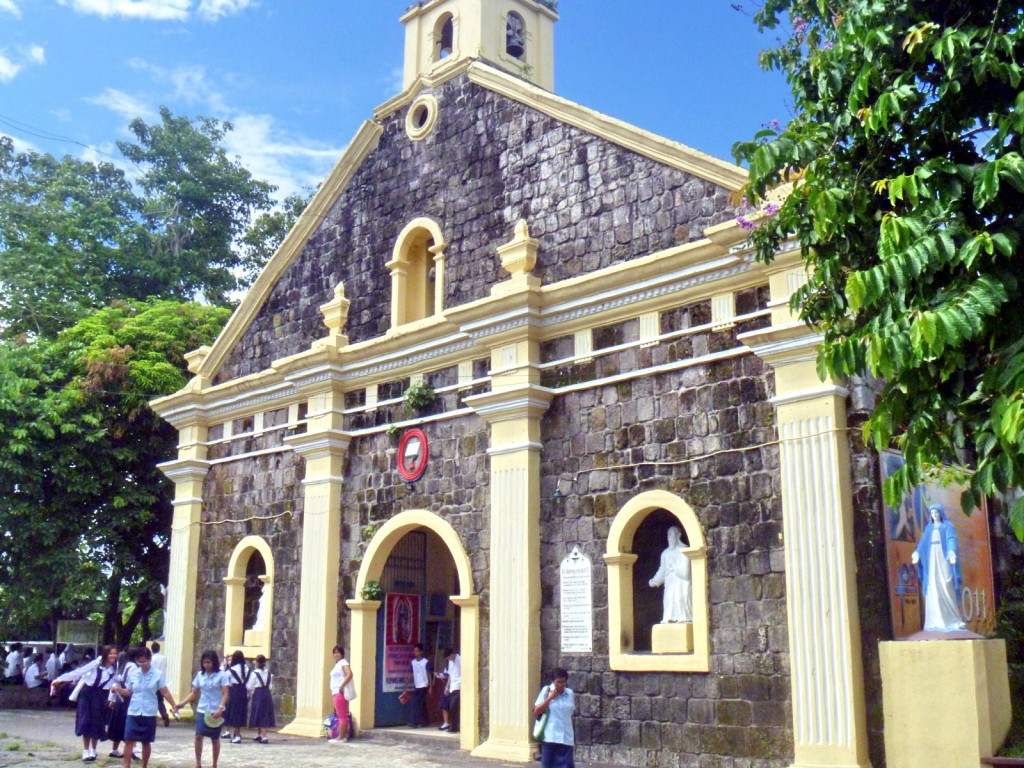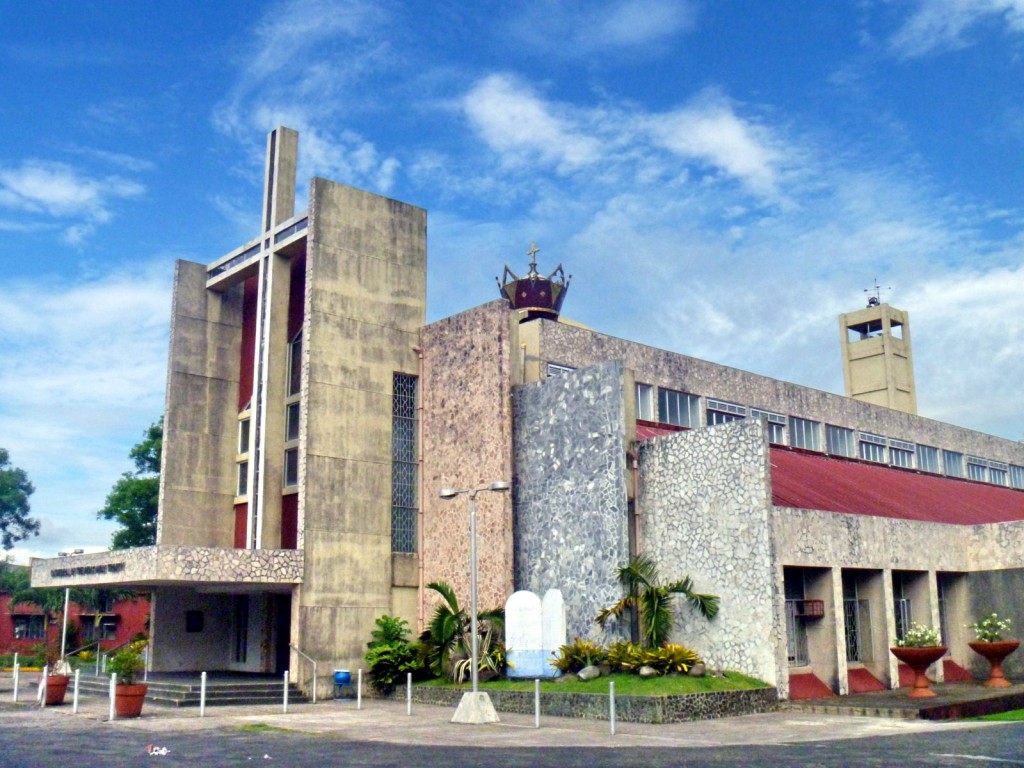 |
| Rufino Pabico Ancestral House |
The Pinyasan Street Dancing and Marching Band Parade, along Vinzons Ave., had now passed us by and, before leaving, Lee, TJ, Bernard and I decided to drop by the two-storey, maroon and white Rufino Pabico ancestral house, the only remaining relic of early 20th century architecture in Daet.
Check out “Pinyasan Festival 2011“
On hand to welcome us was the 75 year old Francisco Pabico Timoner, the grandson of the original owner. Mr. Timoner, I would later learn, is a retired General Manager of the Camarines Norte Electric Cooperative (CANORECO) and a acquaintance of my father-in-law, Mr. Manuel L. Sta. Maria, retired Deputy Administrator of the National Electrification Administration (NEA).
 |
| Francisco Temoner at the grand staircase |
Built in 1917 and the scene of high-society balls in the 1930s, the grand Rufino Pabico house was still well-preserved. Within its well-manicured front yard is an octagonal fountain. Like many typical bahay na bato (stone houses), it has a masonry ground floor and a wooden second floor. Arches are predominant in front; from the ground floor colonnaded front porch, with its fluted square columns, all the way up to its second floor sliding capiz (oyster shell) windows, its arches decorated with intricate lacy (calado) woodwork. That same woodwork can also be found above the windows and in the eave fascias. Between the window sill and the floor are ventanillas with sliding wooden shutters for additional ventilation.
 |
| The well-preserved interiors |
The interiors are just as well preserved. The grand stone staircase, with its marble steps, still has its rococo-style carvings while the alternately dark and light-hued hardwood floor still retain their shine. The ceiling is covered with wood carvings. All these are complemented by a Cornish piano, pre-war chandeliers, wall paintings, vintage family photos and antique wooden furniture including silohiya (wickerwork)-covered chairs. Novelties here include a now-unused wood-fired stove and a free-standing antique, enamel-covered cast iron bathtub.
According to Mr. Timoner, during World War II, the house was used as a headquarters for the Japanese Imperial Army and, later during the Liberation, by American forces. In 1995, a strong typhoon partially destroyed the house but it was soon restored to its original look. The house hit the limelight when it was featured in an article at the Philippine Daily Inquirer, written by our media colleague Amadis Ma. Guerrero. Since then, it has been included in the list of places to see in Daet as well as in the province. On June 19, 1997, the house was conferred the “Provincial Cultural Treasure Award,” as indicated by a plaque installed at the porch wall. During the 2009 Pinyasan Festival, the Daet Kiwanis Club, the Daet Senior Citizens Federation and Reina Daetena hosted the Grand Tertulia de Daet at this house.
Rufino Pabico Ancestral House: Vinzons Ave., Poblacion, Daet, Camarines Norte























